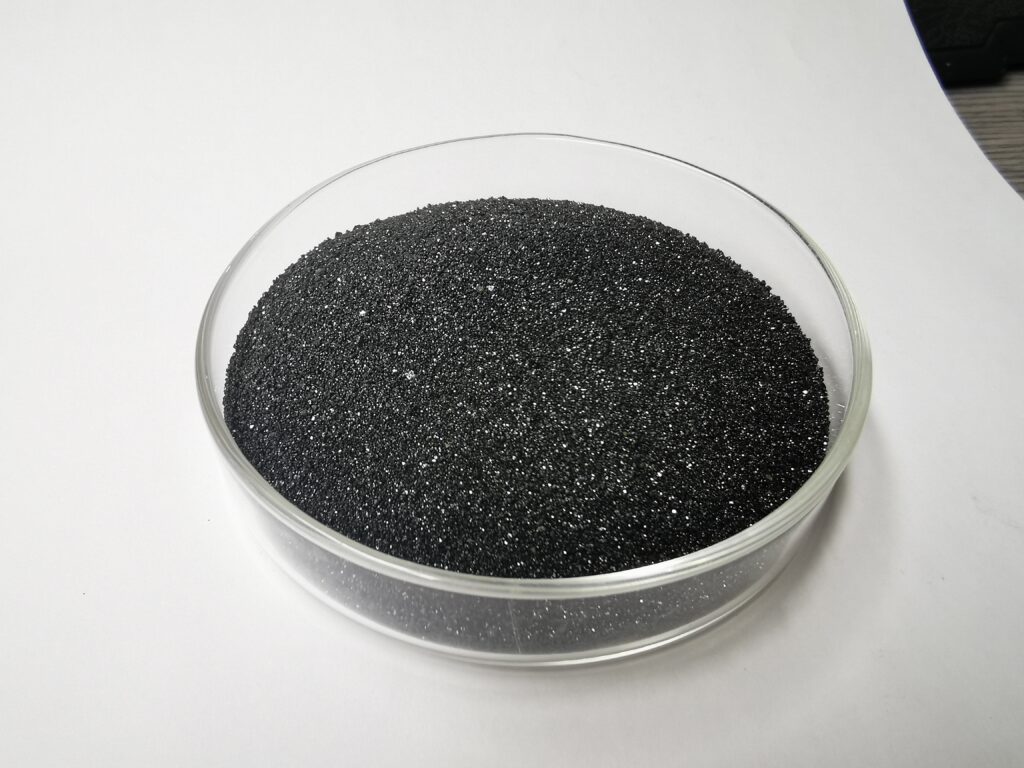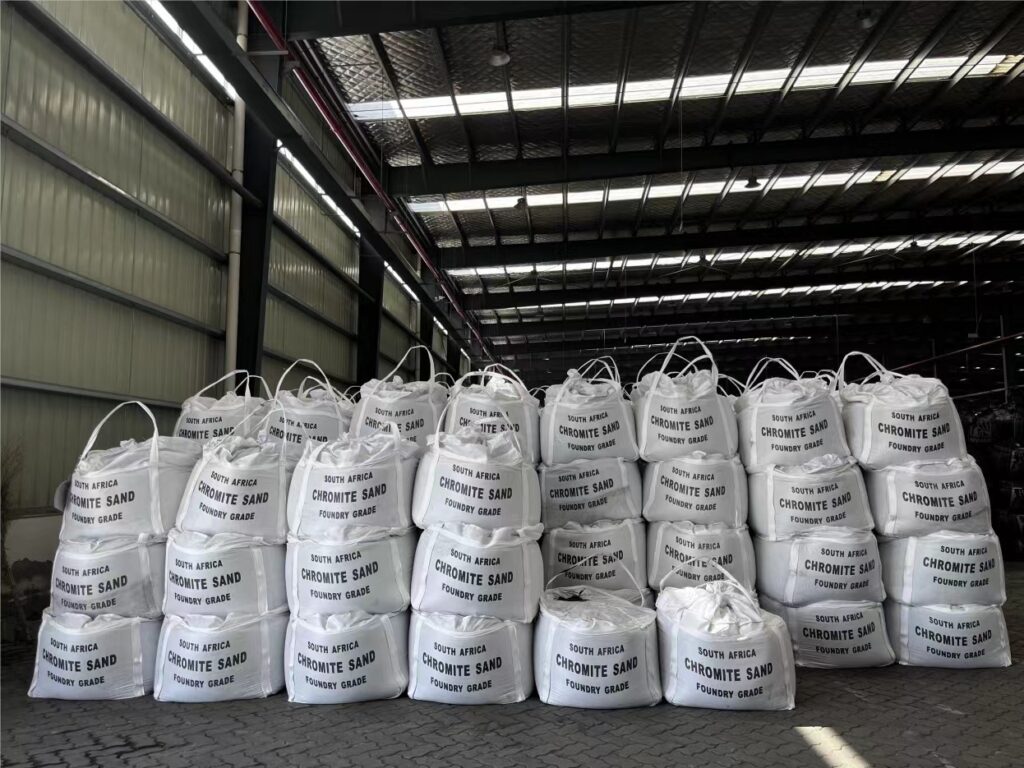1. What is Chromite Sand?
Chromite sand is a naturally occurring mineral sand derived from the mineral chromite, which is an iron chromium oxide (FeCr₂O₄). For foundry use, it is processed (crushed, screened, and often washed) to achieve a specific grain size and chemical purity suitable for resisting extreme temperatures and chemical reactions with molten metal.
2. Key Properties of Chromite Sand
| Property | Description | Benefit in Metal Casting |
|---|---|---|
| High Thermal Conductivity | It absorbs and transfers heat away from the metal much faster than silica sand. | Faster Solidification: Promotes a finer, stronger metallurgical structure in the casting (finer grain size). Reduces Veining: Minimizes the rapid and uneven expansion that causes sand cracks and metal penetration. |
| Low Thermal Expansion | It expands very little when heated. | Excellent Dimensional Accuracy: The mold cavity retains its shape, leading to more precise castings. Eliminates Veining Defects: This is one of its primary advantages over silica sand, which expands significantly. |
| High Refractoriness | It has a very high melting point (approx. 2,150°C or 3,900°F). | Ideal for High-Temperature Alloys: Essential for casting steel, stainless steel, manganese steel, and other alloys that pour at very high temperatures without fusing to the metal. |
| Good Chemical Inertness | It is generally non-reactive with basic metal oxides (like those in steel slag). | Prevents Burn-On/Penetration: Creates a physical barrier that prevents molten metal from penetrating the sand grains, resulting in a smoother casting surface. Reduces the need for costly cleaning and finishing. |
| High Angle of Repose | The grains are angular and interlock well. | Excellent Mold Stability: Provides good support for cores and complex mold shapes, reducing the risk of mold collapse. |
| Natural Basicity (pH ~9) | It is chemically basic. | Resistance to Basic Slags: Works well with the basic slags produced during steel melting, reducing chemical reaction and sand fusion. |
3. Common Applications in Metal Casting
Chromite sand is typically used in specific, critical areas of a mold rather than for the entire mold (due to cost).
Facing Sand: The most common use. A layer of chromite sand (15-50 mm thick) is placed against the pattern to form the mold surface in contact with the molten metal. The backing sand remains regular silica sand.
Core Making: Used for cores in heavy-sectioned castings or areas prone to burn-in, where its high chilling power and refractoriness are most needed.
Parting Layer: In large castings, a layer of chromite sand can be used as a barrier between a silica sand mold and a silica sand core to prevent them from fusing together at high temperatures.
Casting Exotic Alloys: Indispensable for casting metals with very high pouring temperatures, such as manganese steels, chromium steels, and high-nickel alloys.
Chromite sand is a premium, high-performance foundry sand that solves specific problems in casting high-temperature and reactive alloys. While its cost prohibits it from replacing silica sand for all applications, its benefits in producing high-integrity, defect-free, and dimensionally accurate castings make it an invaluable tool in the advanced foundry’s arsenal, particularly for the steel and specialty metals industry.


